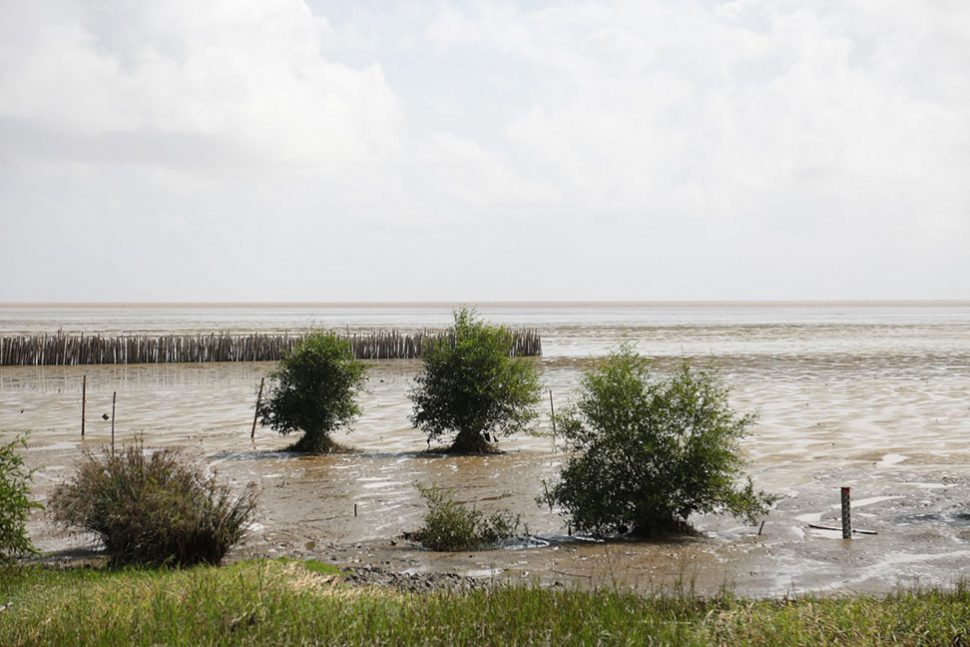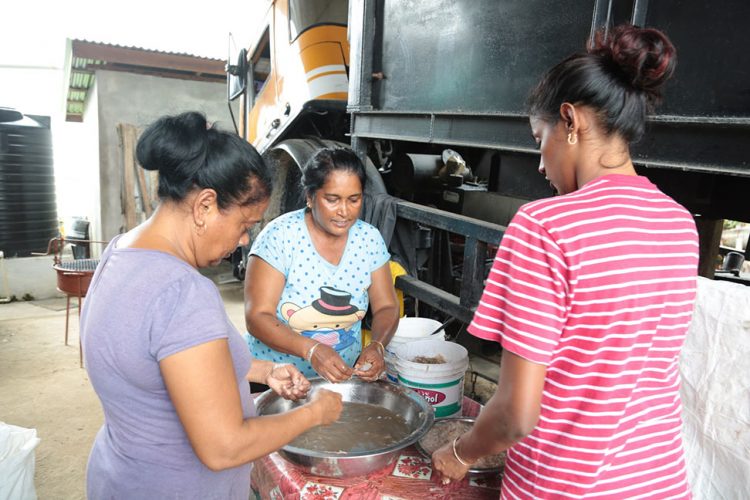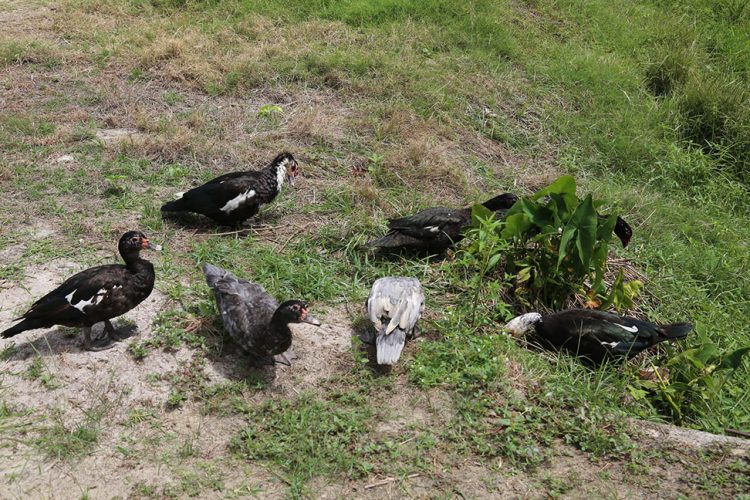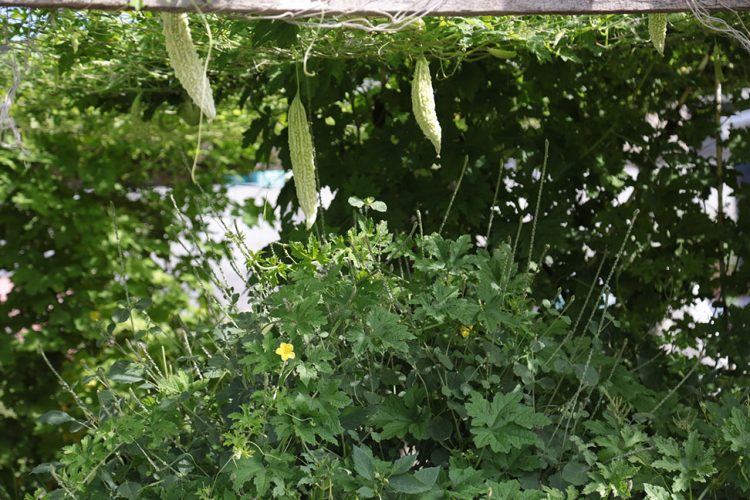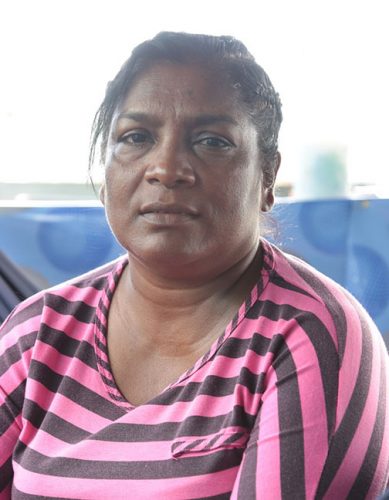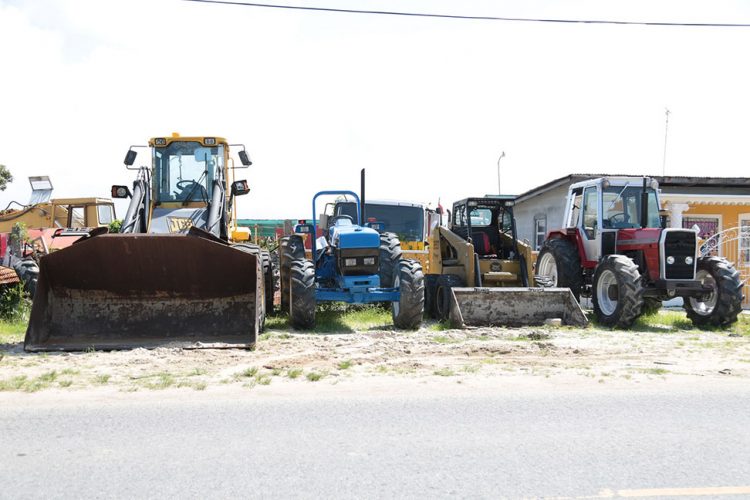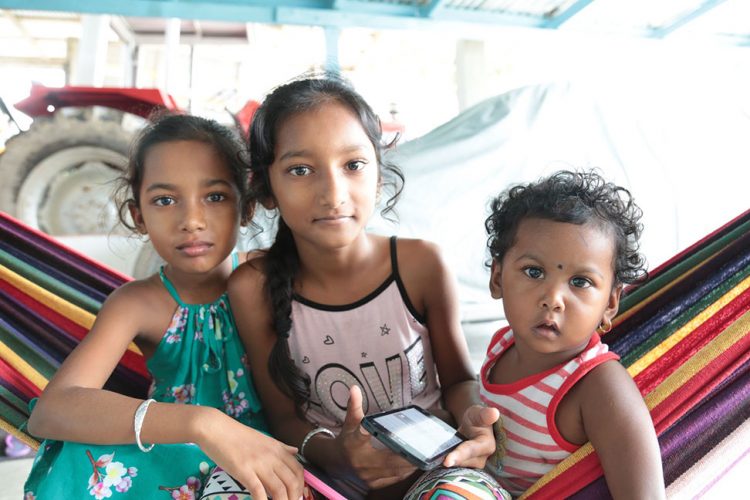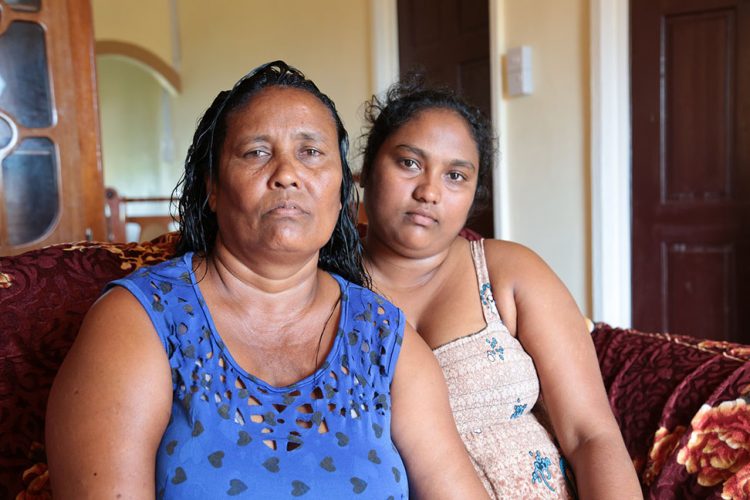Aberdeen is a small community on the Essequibo Coast bordered by Columbia and Three Friends villages, the Atlantic Ocean and rice fields. It has a population of more than 200 residents.
The economic activities are mainly farming and livestock rearing; there is a handful of taxi drivers, teachers and nurses living in the village.
Down the road that led into the backdam I spotted men and their cattle; one man was trying to stay in control of a bull, grasping the rope with every last bit of strength while being half-dragged by the unwilling animal. There are a few houses near the rice fields and Taijwattie Narine and her three children live in one of them.
Narine, who hails from the nearby Columbia, lived for quite a number of years at Wales on the West Bank Deme-rara where she attended Wales Primary and Community High schools. After completing school, Narine returned to her village where she got married and had five children. Among them were twin boys, both of whom have died: one died at age 13 after having had seizures his entire life; the other drowned after a night of binge drinking.
Her husband, who was also an alcoholic, she said, fell ill and died eventually. She noted that with all these challenges she and her two sons and daughter struggled to make ends meet. For a long time before her children were old enough, she worked as a domestic. She no longer works and said the family mostly depends on her daughter, who she praised for being its backbone.
For most of the 27 years they have lived at Aberdeen, Narine and her family made use of the water in the canal situated between the rice field and the village for bathing, washing, cooking and drinking, but recently they have been using rainwater for cooking and drinking since the canal is not being upkept as before.
When asked to compare life in Wales with Aberdeen, the woman said that while Georgetown and jobs specifically were more easily accessible and Wales was brighter, that she much preferred her quiet life in the country. “I like living here. The people here are very nice…,” she added.
Narine rears ducklings and keeps a kitchen garden. Whenever the family feels like having sweet-water fish they make their way down to the conservancy almost two miles into the backdam and catch them there.
Narine and other residents in the village often travel to Affiance, two villages away, where they purchase groceries from Bacchus Supermarket. Aside from wanting the roads to be redone and for streetlights to be installed, Narine urged that a ground can be constructed where the village youth can play their cricket, rather than in the streets where they can be found whenever they cannot get permission to play on the ground at Affiance, also owned by the Bacchuses.
In between doing chores, Roopattie Singh was taking a break in her hammock. She was born and raised in Aberdeen. After getting married she lived for a bit in Goed Fortuin and Kitty, which she said was relatively nice and she would not mind living in either community, but quickly added that Aberdeen will always be her hometown.
“People here are more reserved today,” Singh said. “Longtime children used to play with one another, all kinds of games. On holidays we used to go to either Starlight Cinema in Anna Regina or Paragon Cinema in Richmond. We found more time for each other in those times. People mattered more then; neighbours used to always visit or check on neighbours. We used to go down to the backdam together to catch fish, to pick mango and hang out together.”
In addition, Singh said that the Aberdeen beach played a pivotal role in the social lives of the residents in the community, who in the afternoon, would make it a date to spend time with each other whether playing cricket, hopscotch or just walking by the ocean. The beach, she shared, was all sandy until mud started washing up on it and integrating itself as part of the soil. Before long, the once sandy beach was one huge muddy swamp as it remains today. Bamboos have been planted throughout to prevent the mud from being washed away and eroding the soil there. In a few spots, mangroves are also shooting up.
Singh continued that sadly the situation is not the same today. With all the gadgets that are available, people are in their own worlds, too taken up to be bothered. She admitted that this was so with her and her two sons who live with her, saying that while one son might be watching television, she and her other son were usually cooped up in their rooms on their phones.
Aberdeen has two places of worship; a masjid and the Anglican church. However, Singh attends Shekinah Tabernacle three villages away at Taymouth Manor. Like many residents of Aberdeen, she keeps a kitchen garden which is fenced off to prevent animals entering. She plants boulanger, okra, bora, pepper, tomato, eschallots and celery.
At one home a boy was making a cricket bat while three other children were looking on. The grandmother of two of the boys, Noreen Chapman, resides there. Chapman, who declined to be photographed, hails from Queenstown and moved to Aberdeen 63 years ago. She shared that the section she lived in was first referred to as Williamstown, but most people of the residents consider the village to be Aberdeen.
Compared to Queesntown, Aberdeen has a much quieter atmosphere, the woman said. Chapman noted also that Aberdeen once had a ground where the youths played their cricket, but this was many years ago before persons began residing there. Her days are spent in the company of her daughter and her family; she also does a bit of gardening adding that any extra of a particular crop is shared with the neighbours.
Although life in Aberdeen has changed a lot when it comes to socializing, Chapman said it remains a peaceful community. Every Sunday she and her family attend the Anglican church in the village.
Mohammed Kadir said Aberdeen is his only home, though his profession in the wildlife trade has taken him into deep jungles of Guyana. “My grandfather and father began doing this wildlife business years ago. When I turn 13, I got into the business with them,” Kadir said. He has been doing it all his life he shared.
The man admitted that there are a few times when he was bitten by the anacondas he sold but said he is not afraid of them. At the time of my visit he had one in a wooden crate nearby and lifting a few pieces of wood from the top, revealed a huge snake coiled in the crate, its head lifted. The snake, Kadir said, was 14 ft long. Nearby dozens of parrots and macaws squawked in their cages. Kadir said he also had caimans, pointing to the back of his house.
His grandson Adam followed him around. Adam has already taken to the animals, Kadir said mentioning that the little boy helped to put the tail part of the snake into the crate when he took it home.
For Kadir, what is more dangerous than the animals is the lonely routes he has to take. He said he was robbed once but decided against reporting the robbers as they knew each other, and since he had to take the same route again and again for his livelihood, he preferred to keep quiet.
Kadir is only bothered by the mosquitoes. He said Aberdeen is full of them and begged officials to fog the area more often. He insisted too that something be done about the bush in the few vacant lots in the village including the cemetery belonging to the Anglican church so as to deal with the mosquito situation.
At one house, three women were busy picking (cleaning) shrimp as they chatted among themselves. Asking not to be named, they shared that the farmers in the area were not getting enough water to tend their farms and have been pumping water from the conservancy, which has only put them in expense of having to buy or rent pumps. They lamented that a bag of Grade A paddy only fetches $2,100 and in some cases paddy which is graded really low can garner only $300 a bag.
